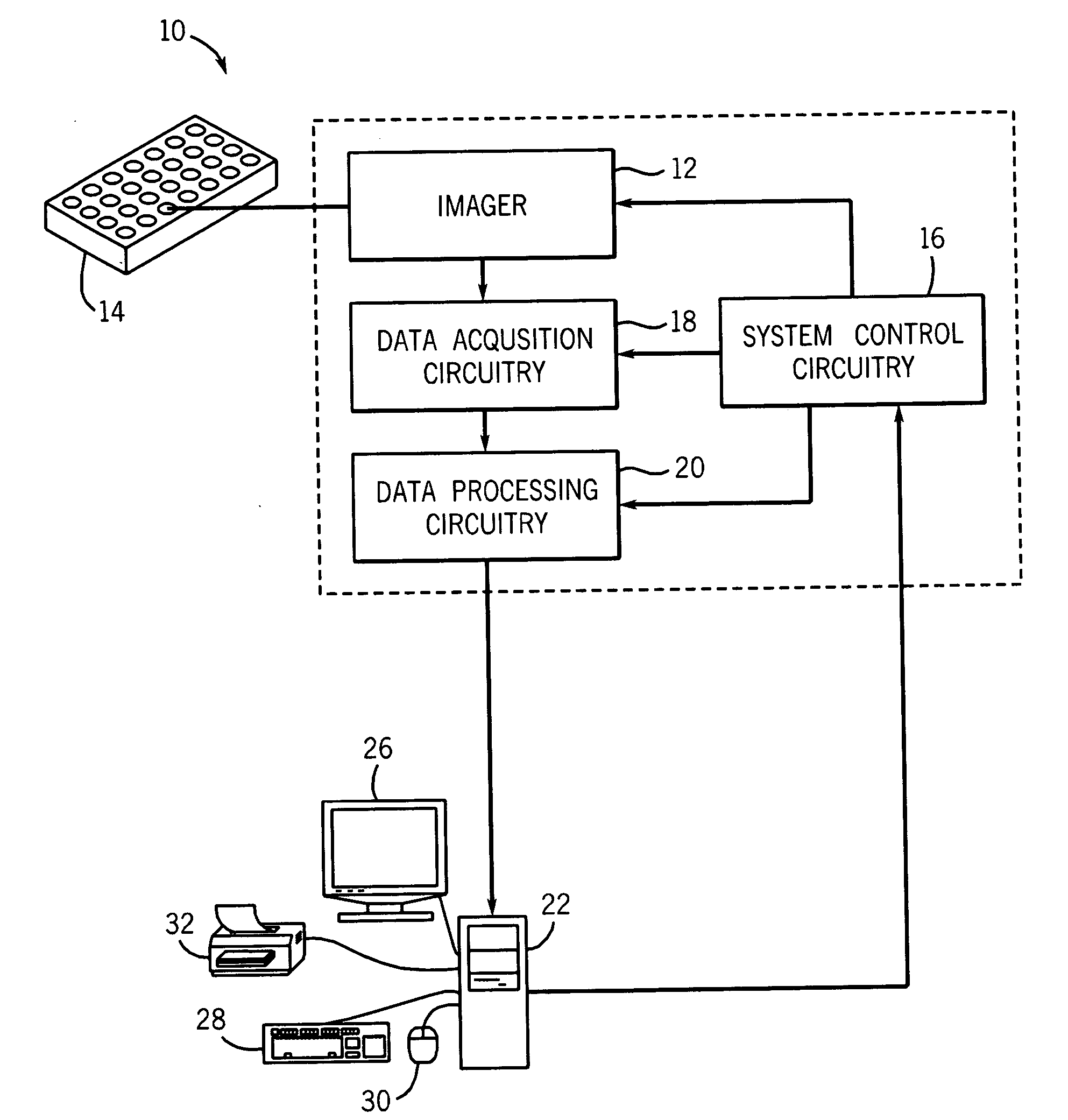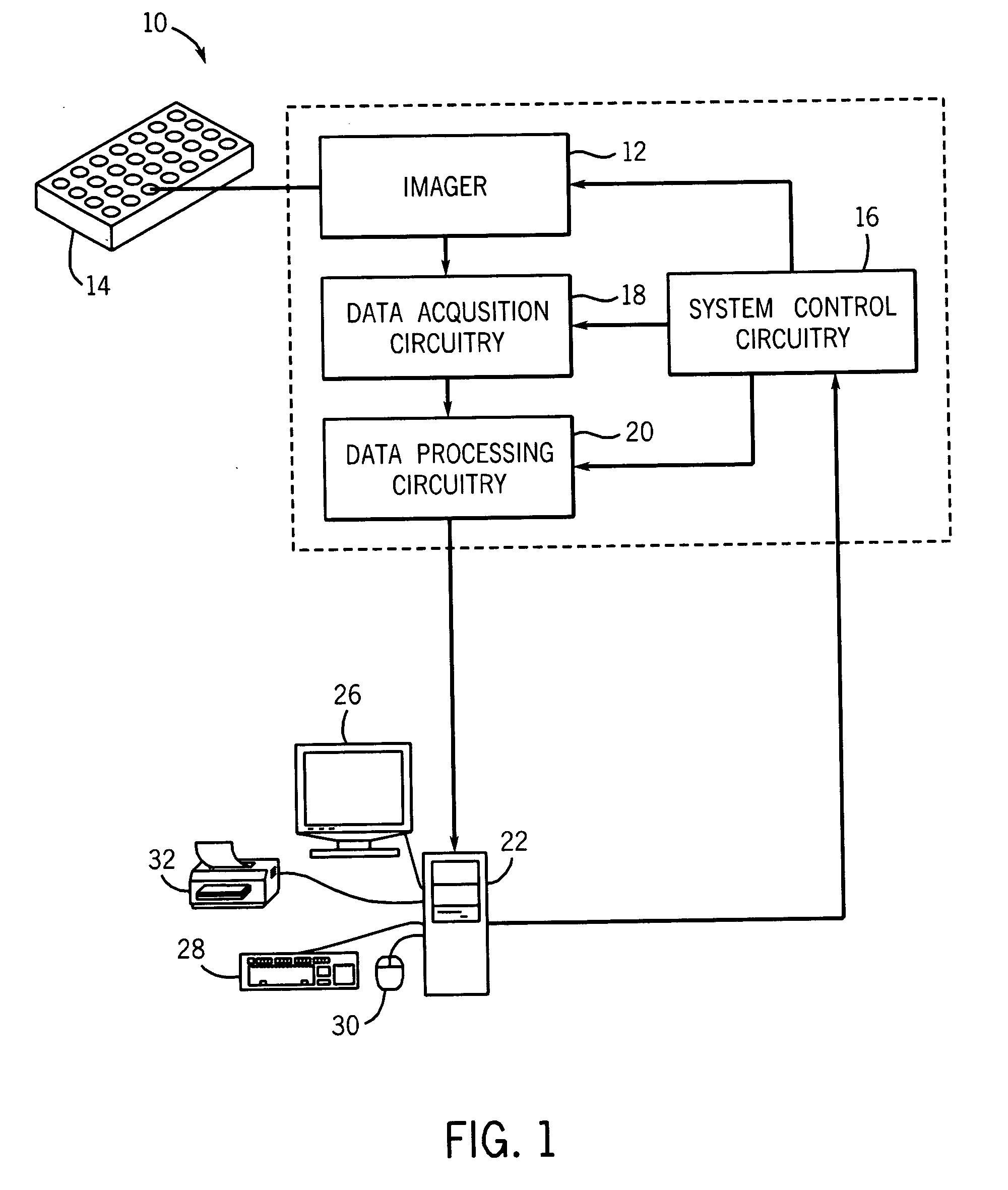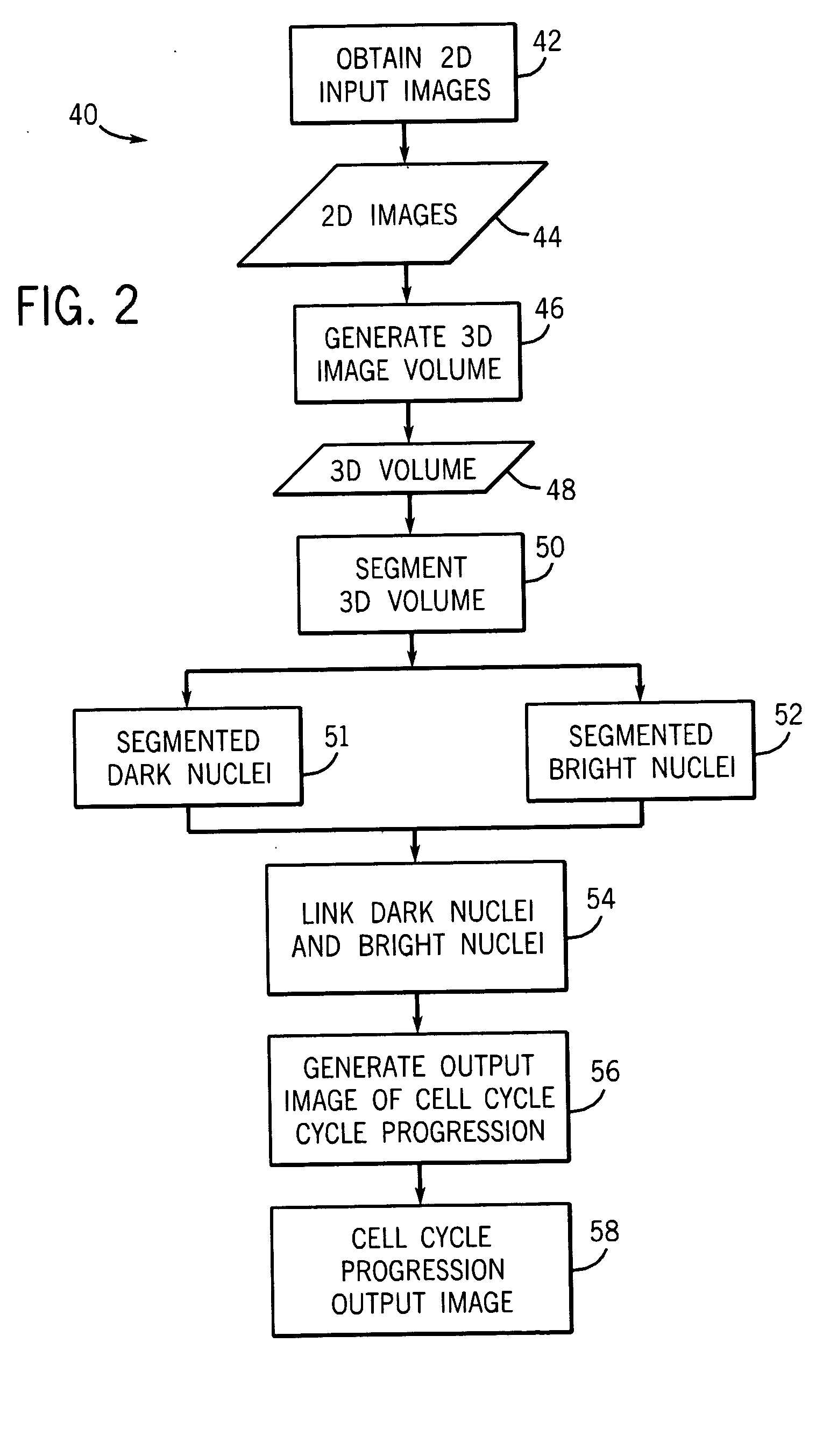Time-lapse cell cycle analysis of unstained nuclei
a cell cycle analysis and time-lapse technology, applied in image analysis, image enhancement, digital storage, etc., can solve the problems of inability to distinguish between the various phases of the cell cycle, toxic side effects of fluorescent dyes, and barriers to long-term cellular imaging
- Summary
- Abstract
- Description
- Claims
- Application Information
AI Technical Summary
Benefits of technology
Problems solved by technology
Method used
Image
Examples
Embodiment Construction
[0024] In the field of medicine it is often desirable to be able to track the progress of a cell through different phases of the cell cycle. Generally, the cell cycle may be divided into four distinct phases. DNA in the cell nucleus is replicated during the “S” phase of the cell cycle (for “synthesis”). The entire cell-division phase is denoted as the “M” phase (for “mitosis”). This leaves the period between the M phase and the start of DNA synthesis (the S phase), which is called the “G1” phase (first gap phase), and the period between the completion of DNA synthesis and the next M phase, which is called the “G2 ” phase. Interphase is a term for the non-mitotic phases of the cell cycle, and includes G1, S, and G2 phases. In a typical cell, interphase may comprise 90% or more of the total cell cycle time. However, in cells that have been treated with one or more cell cycle altering compounds or agents and / or a cell-cycle altering stimulus (e.g. irradiation), normal progress through ...
PUM
 Login to View More
Login to View More Abstract
Description
Claims
Application Information
 Login to View More
Login to View More - R&D
- Intellectual Property
- Life Sciences
- Materials
- Tech Scout
- Unparalleled Data Quality
- Higher Quality Content
- 60% Fewer Hallucinations
Browse by: Latest US Patents, China's latest patents, Technical Efficacy Thesaurus, Application Domain, Technology Topic, Popular Technical Reports.
© 2025 PatSnap. All rights reserved.Legal|Privacy policy|Modern Slavery Act Transparency Statement|Sitemap|About US| Contact US: help@patsnap.com



